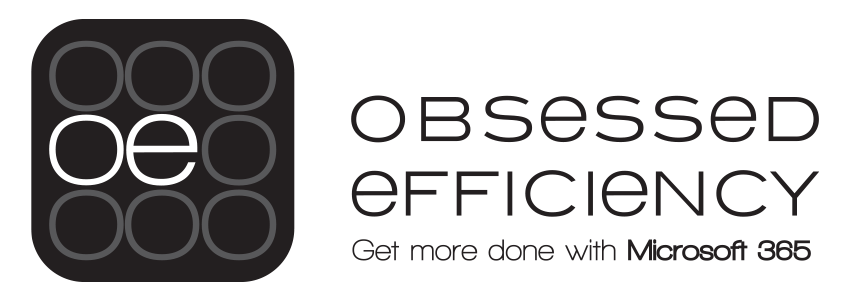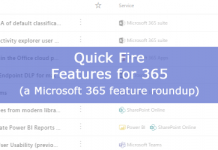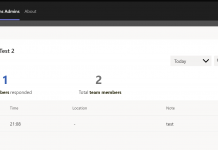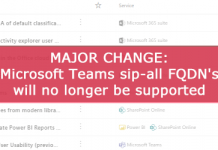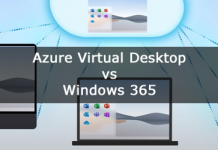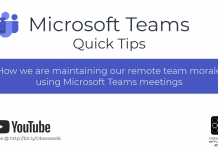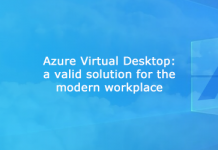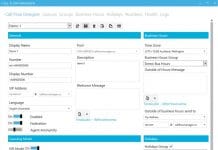Azure Virtual Desktop and Windows 365 are both cloud-based virtual desktop technologies provided by Microsoft. In this article we’ll look at some of the key Azure Virtual Desktop vs Windows 365 differences.
Azure Virtual Desktop vs Windows 365 – Similarities
Comparing Azure Virtual Desktop vs Windows 365 there lots of similarities, and that’s because they are both powered by Azure Virtual Desktop. Here’s what Azure Virtual Desktop and Windows 365 share:
- Hosted in Azure and powered by Azure Virtual Desktop technology
- End user client experience, supported on:
- Windows, MacOS and Linux PC’s
- Android and iOS
- Web Browser
- Windows OS licencing (either of the following options):
- A per user subscription that includes Windows 10 Enterprise + Primary user’s primary work device must be licensed for Windows 7/8/8.1/10 Pro, Enterprise, or Education
- Windows VDA per user subscription
Azure Virtual Desktop (AVD)
Azure Virtual Desktop is hosted in your own Azure tenancy giving you ultimate control of the solution.
- Fully managed in the Azure Portal within your own subscription
- Supports custom gold/base images
- Supports both user dedicated desktops and/or Windows 10 multi-session (get economies of scale out of your virtual desktops)
- Active Directory support:
- Azure AD Domain Services or Windows Server AD Domain Services
- Azure AD – coming soon
- Applications management:
- Microsoft Endpoint Manager (currently requires Hybrid Join)
- MSIX App Attach
- Updating your gold images
- Licencing requirements (in addition to Windows OS licencing):
- Azure subscription (consumption-based pricing)
- Microsoft Office requires a subscription with SCA (Shared Computer Activation) rights for multi-session desktops
Windows 365
Windows 365 is hosted in a Microsoft managed Azure tenancy that you do not have access to. For this reason, its manged differently than Azure Virtual Desktop, dependant on the Windows 365 version you choose. There are two versions:
Windows 365 Enterprise
- Network access is plumbed into your own Azure tenant. This allows your Windows 365 virtual desktops to access resources in your own Azure tenancy and gives you the ability to apply network security or access into other networks
- Managed by Microsoft Endpoint Manager
- Supports custom gold/base images
- User dedicated desktop (no support for Windows 10 multi-session)
- Fixed per user per month cost for the desktop, consumption based for networking
- AD support:
- Azure Hybrid Join (on-prem AD Domain Services in Hybrid with Azure)
- Azure AD – coming soon
- Application management:
- Microsoft Endpoint Manager (currently requires Hybrid Join)
- Licencing requirements (in addition to Windows OS licencing):
- Windows 365 per user licence (licence tears dependant on virtual desktop spec)
- Microsoft Endpoint Manager
- Any Office subscription is supported
Windows 365 Business
Windows 365 Business is fully managed by the end user and is much like a virtual version of a personal computer.
- There is no network management – Microsoft provides access to the internet
- No built-in management tools
- No custom gold/base image support
- User dedicated desktop (no support for Windows 10 multi-session)
- Fixed per user per month cost for the desktop
- AD support:
- Azure AD only
- Application management:
- Managed by the end-user or other 3rd party tool (e.g. RMM)
- Licencing requirements (in addition to Windows OS licencing):
- Windows 365 per user licence (licence tears dependant on virtual desktop spec)
- Any Office subscription is supported
When to choose what
Azure Virtual Desktop: suited to businesses of around 100 seats or more who want as much management flexibility and control as possible. For large businesses, the ability to use Windows 10 multi-session provides excellent cost saving benefits.
Windows 365 Enterprise: suited to businesses of all sizes who want control over network access and centralised management. The fixed per user per month costs are attractive to due to their predictability.
Windows 365 Business: suited to small businesses who want a low fixed-cost option and don’t require a centrally management solution.
Need more info
Azure Virtual Desktop vs Windows 365 – August 2021 User Group
This video is my presentation on Azure Virtual Desktop vs Windows 365 from the NZ Microsoft Modern Workplace User Group.
Nerdio
In our MSP we leverage Nerdio to manage Azure Virtual Desktop and Windows 365 (once its released). They have an incredibly detailed article on the same topic that’s worth checking out. They also published a great comparison table that’s getting huge mileage on the internet.
Check out the Nerdio comparison table below, and read their full article here:

Related Articles
- Azure Virtual Desktop Review
- Azure Virtual Desktop & Windows 365 Licencing Requirements
- Active Directory Options Demystified
- Azure Virtual Desktop Domain Join Options
- Manage Azure Virtual Desktop with Endpoint Manager (Intune)
- Azure Virtual Desktop Classic vs ARM
